Last week we held another super-fun Simpleweb Challenge hacknight, this time sponsored by Bath-based Lovehoney. As the sponsor deem themselves ‘the sexual happiness people’, we set the theme as ‘community and relationships’, challenging attendees to think up apps that would help bring people together.
As the best apps aren’t always thought up by techies, we opened up the night to everyone and anyone who fancied developing an app idea. While developers created technical working prototypes as usual, other people created mockups and wireframes to demonstrate their ideas.
Instead of one or two big prizes, we broke judging down into 6 categories and gave each winner a small cash prize.
The winners, as judged by Lovehoney co-founder Richard Longhurst, Director of Digital and Regional Innovation at the Marketing Agencies Association, Mette Davis and Simpleweb full-stack developer Adam Butler were…
21 Days Later – Most innovative idea
@motionimaging, @jameseder, Chris Booth
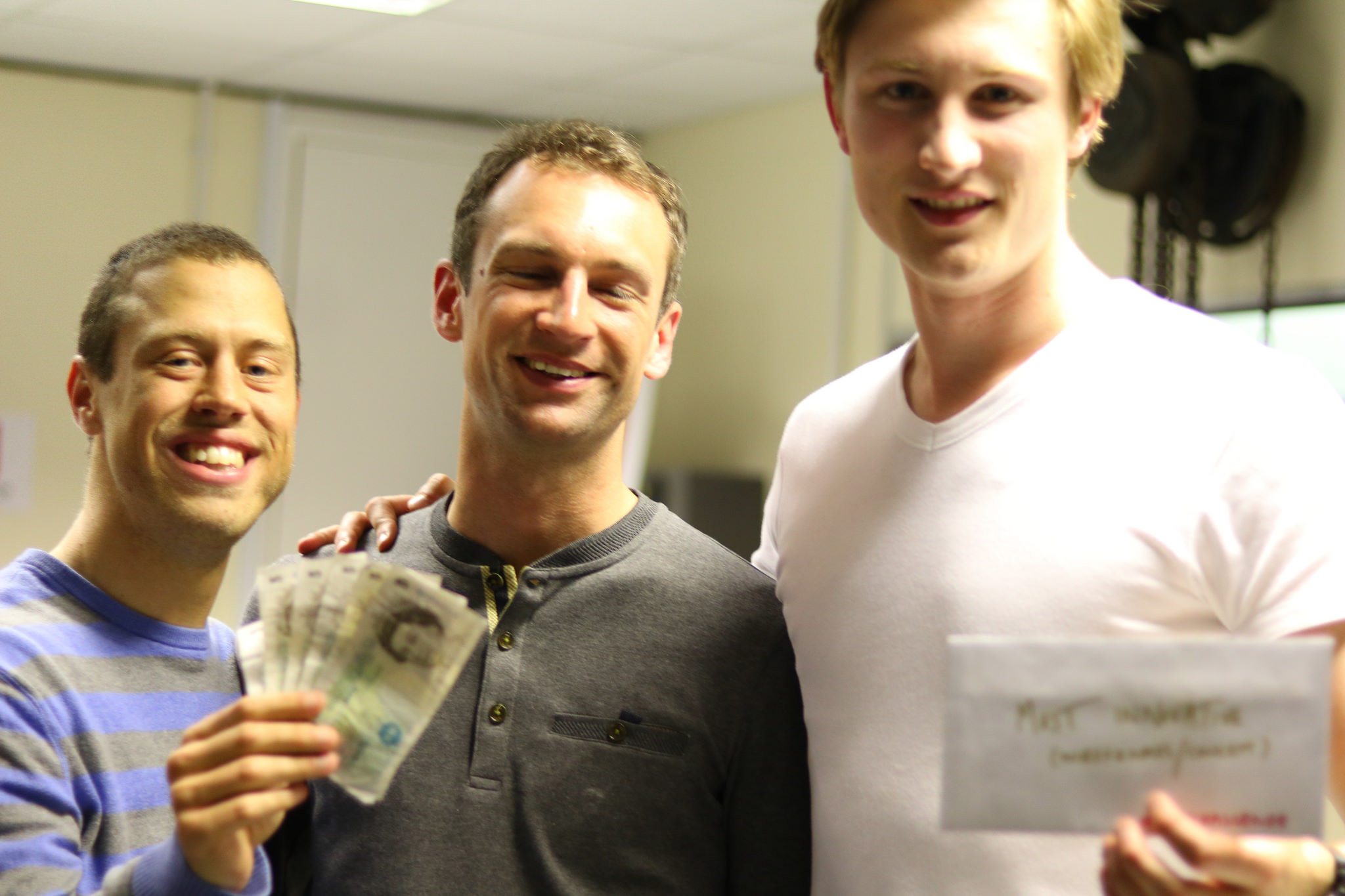
Over time people pick up bad habits which affect them and the people around them. It’s said that if you’re able to do something for 21 days in a row you can break a habit so James, Chris and Paul came up with an idea for an app that would do just that.
“The aim” says James, “is that at the end of the challenge people have been able to stop their habits positively impact on their lives, relationships and the community.”
Users sign in, select a habit they want to quit, invite a friend to join them and start the challenge.
Each day there are tasks and alerts to help move users forward. Once you’ve done your task it alerts your partner. You can also check in with your partner via chat if you are struggling or prompt them offering support.
When you’ve completed your task each day there is a chance to social share so other people can see your progress which provides social validation.
Nintender – Most absurd
@jegtnes, @nicholedwight, @rstbroker
Simpleweb developer Nichole, Simpleweb alumni Alex and their friend software developer Richard set out to create bracelets that would notify people when they walk past each other.
The idea was that when a user gets home the bracelets report back to a Home Base module to share which other users they’ve encountered. The home base then sends that data to a cloud backend which can connect those users based on their previous geographical proximity.
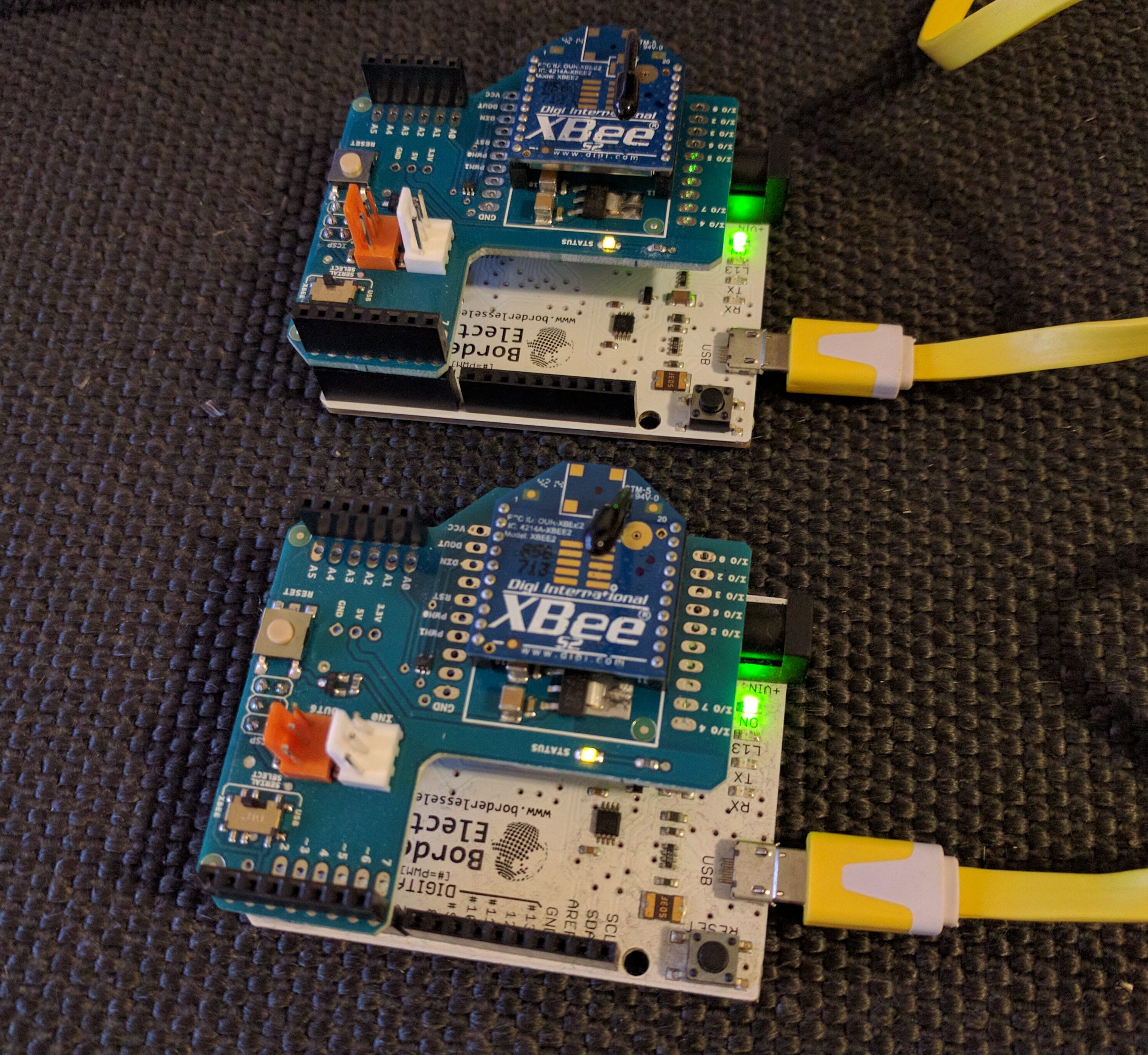
“We burned 2 hours not being able to get the 3 XBee units to talk to each other properly, spent the last 45 minutes reworking the wireless communications to use some RF Transmitter / Receive modules we were kindly lent… however we only had time to get the two Arduino “bracelets” to communicate with each other, but not communicating with the cloud backend set up by Nichole” says Richard.
The team were able to demonstrate the bracelets lighting up in the end, and for the idea of everyone in a bar wearing light up bracelets to notify each other of their presence, Nintender was awarded the most absurd prize.
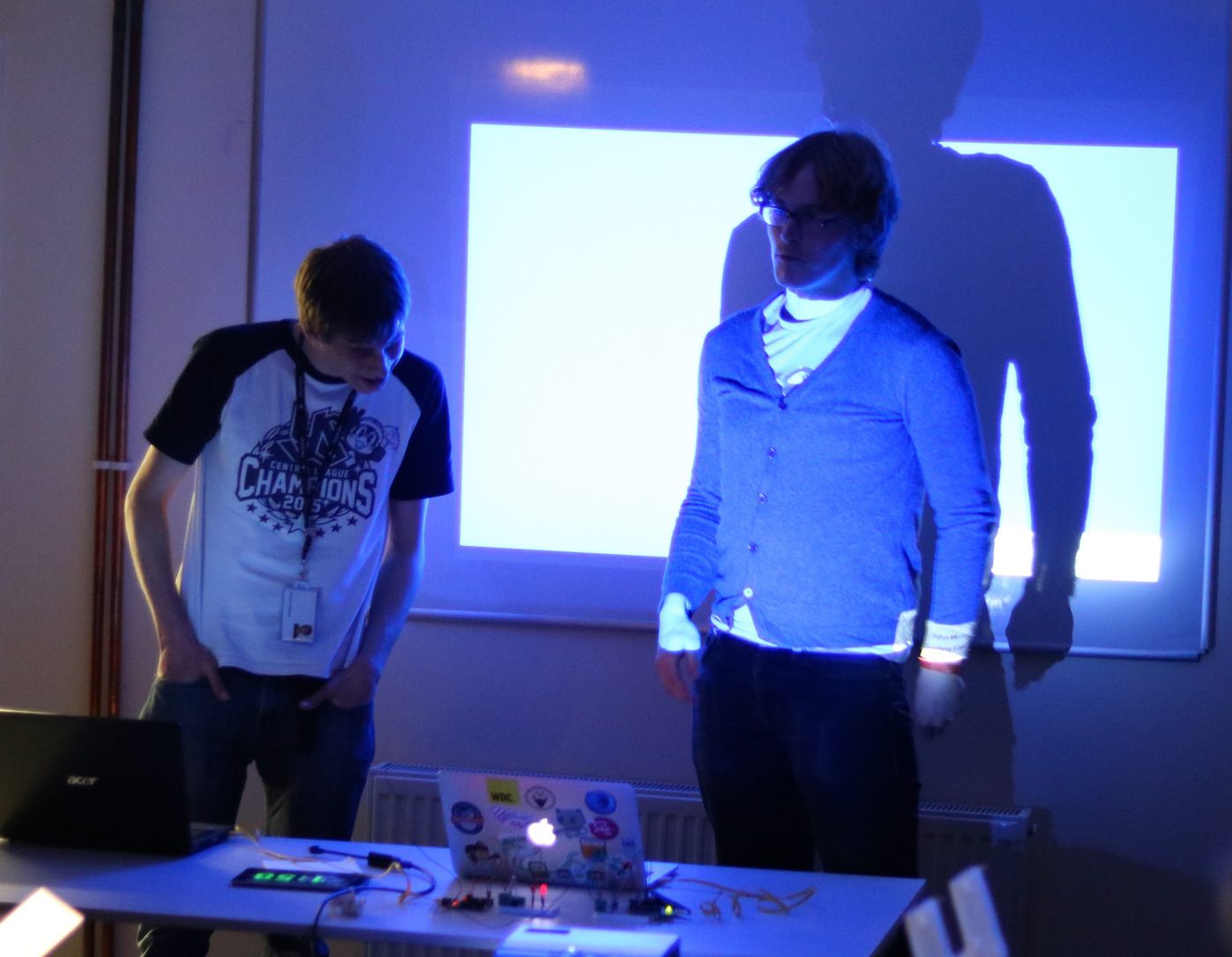
Foodents – Most commercially viable
@ghrowe, @beavenlaura
George, Senior Digital Producer at Aardman Animations and Laura, Freelance Graphic Designer and Illustrator created mockups for Foodents – an app for students to pool their resources to cook cheaper, tasty meals, make new friends and try new types of food.
“The idea is that users sign up with their location and can then offer to cook a meal, or eat at other meals happening nearby” says Laura. “The cost of all the ingredients is split amongst the whole group; whoever cooks pays less, as do those who offer to wash up, and all payment is handled through the app to stop all the “Oh I’ll pay you next week” bullshit.”
Laura and George believe that Foodents would work best for students in halls of residence, especially international students who might not know each other and can showcase local delicacies. Potential revenue models include taking a few pennies off each transaction, selling in-app ad space to supermarkets/recipe books, or do the actual ordering of the foods through the app and sell this app to a supermarket as a promotional tool.
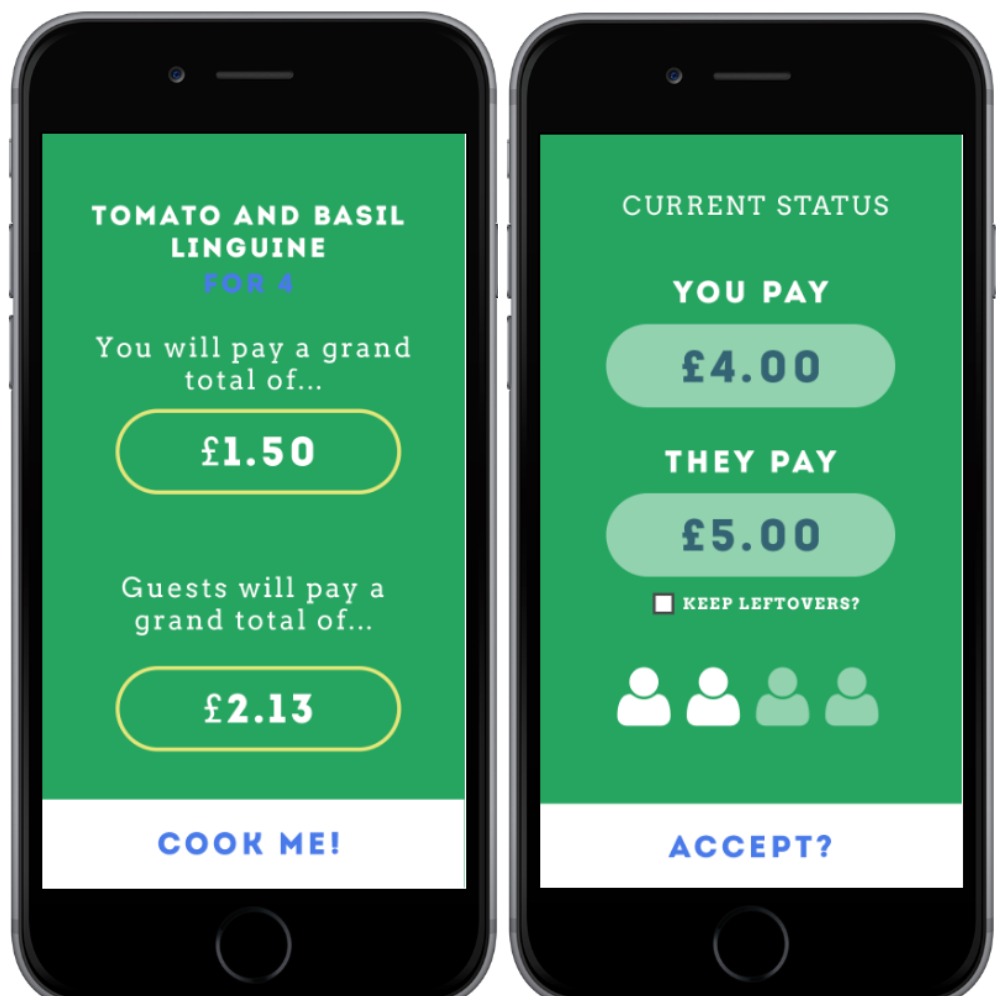
George came up with the idea when thinking about the Communities and Relationships theme of the hack, whilst eating the fourth batch of a lovely spaghetti Bolognese he and Laura had prepared some weeks earlier.
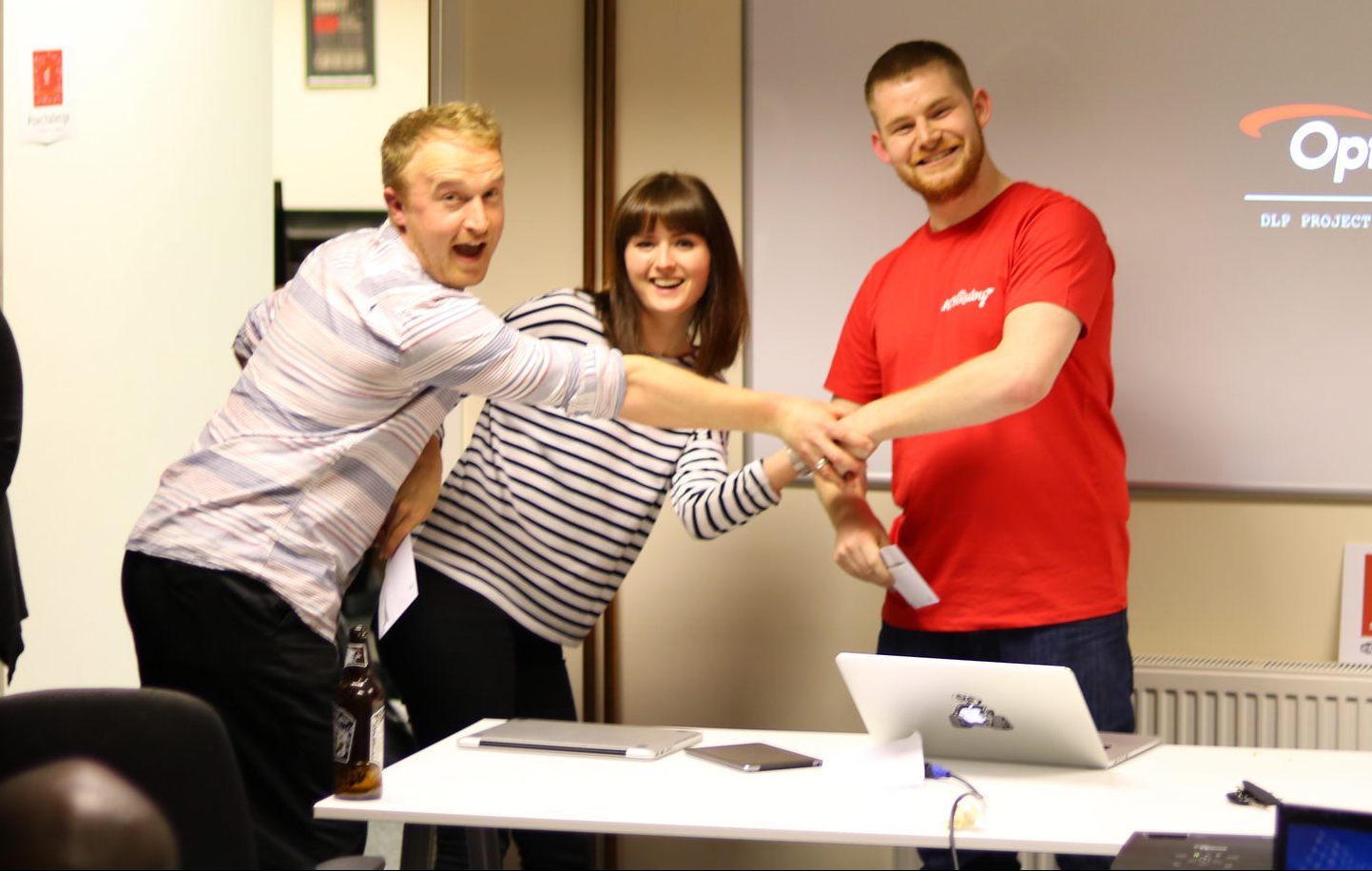
You can view the interactive mock up on Marvel here.
Chill& – People’s Choice
@Ben_Allen, @roarster31, @Simonjpartridge
Unviersity of Bristol students Ben, Rory and Simon created the web app, Chill&, which is aimed at people wanting to organise a social event but not having anyone to do it with.
Users enter what they want to do and where they want to do it such as ‘Chill&Picnic’ in ‘Brandon Park’. This is then shown to nearby users who are free to join. When a user joins, they can optionally specify something they would like to bring such as ‘music’, thus changing the event name to Chill&Picnic&Music.
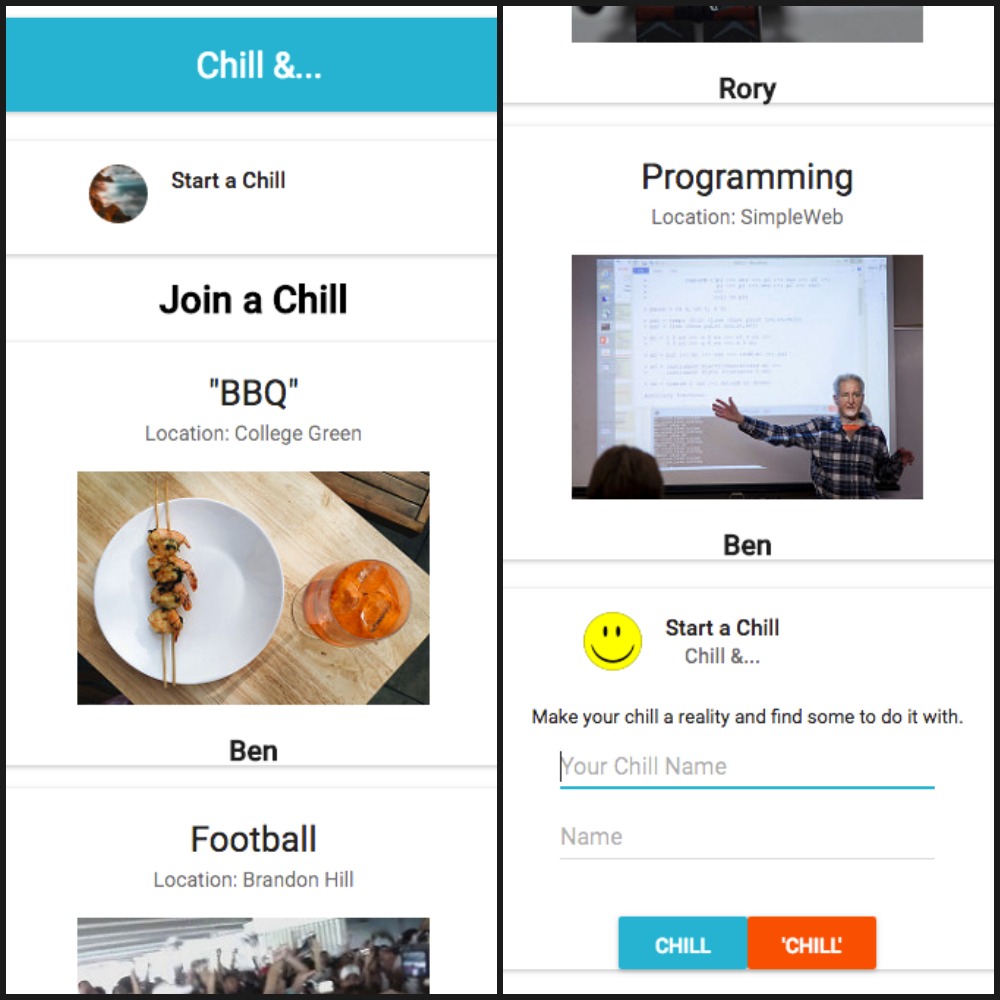
“Two types of Chills are available” says Ben, “the standard Chill or the slightly more involved ‘Chill’. These allow people to gauge an understanding of what type of Netflix & Chill you are on about!”
The technology behind Chill& is Material UI and React for the front-end and then NodeJS for the server.
You can see the Github project here.
LoveBuzz – Most innovative tech and Lovehoney Prize
@Adenforshaw
Aden, CTO and Co-Founder of video advertising company, Coull, won two prizes for his vibrating arm bands that couples can use to send each other little “buzzes”.
“The inspiration I drew on was the theme being communication & the sponsor being sex toy manufacturer Lovehoney, who has a product line of remotely triggered devices” says Aden. “These are high barrier to entry for most people, so I figured to start them on this path a gentler gateway device could help introduce people to the concept.
“Relationships between 2 people, be that your best friend or lover have ways of communicating. It could be a nod, wink or cheeky smile that only the other person really gets.
“So, spurred on by the free drinks, I foolishly tried to hack together a wearable that could emulate that in 3 little hours….
“Enter – the LoveBuzz!”
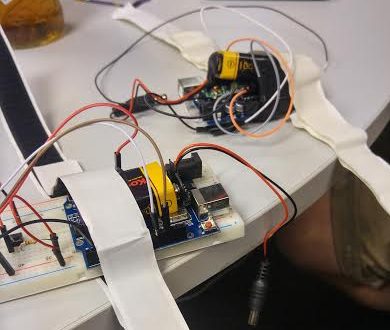
LoveBuzz uses a couple of Arduinos, RF radios and vibration motors from mobile phones. When the button on one is tapped, it triggers the vibration motor on the 2nd.
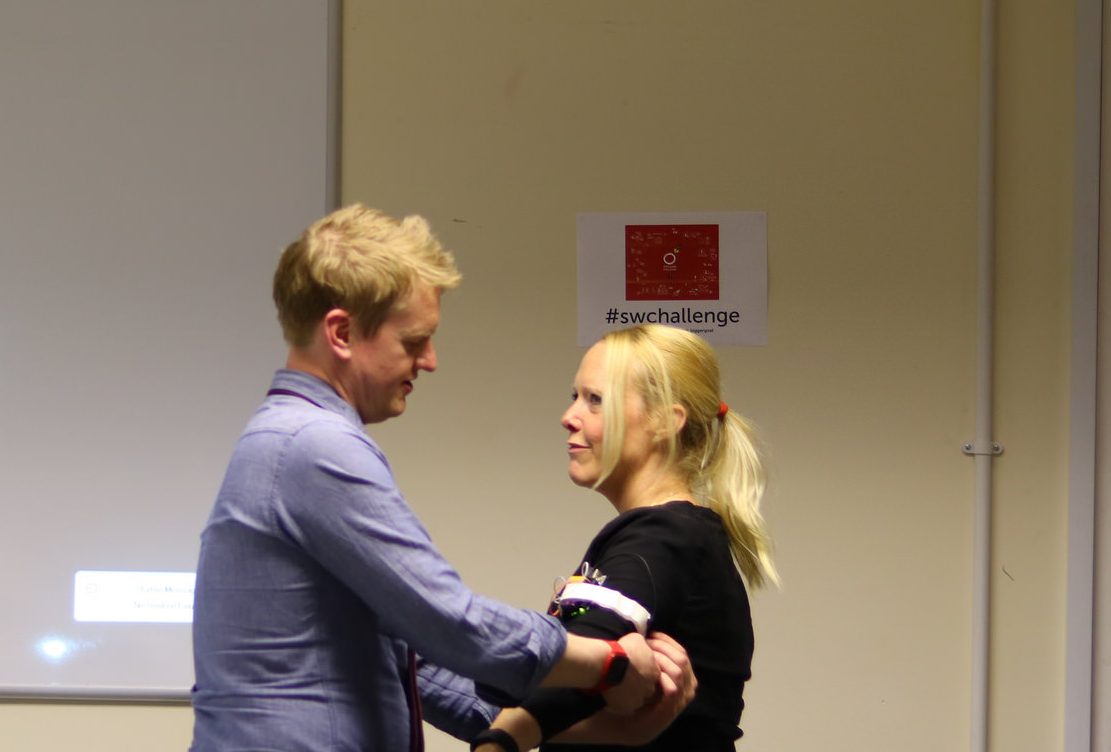
“3 hours is tough to make any hardware, especially on your own” says Aden. “The people and the environment really helped, especially the chill & beer. I would definitely recommend anyone with a hacker mindset to attend the next one.”




